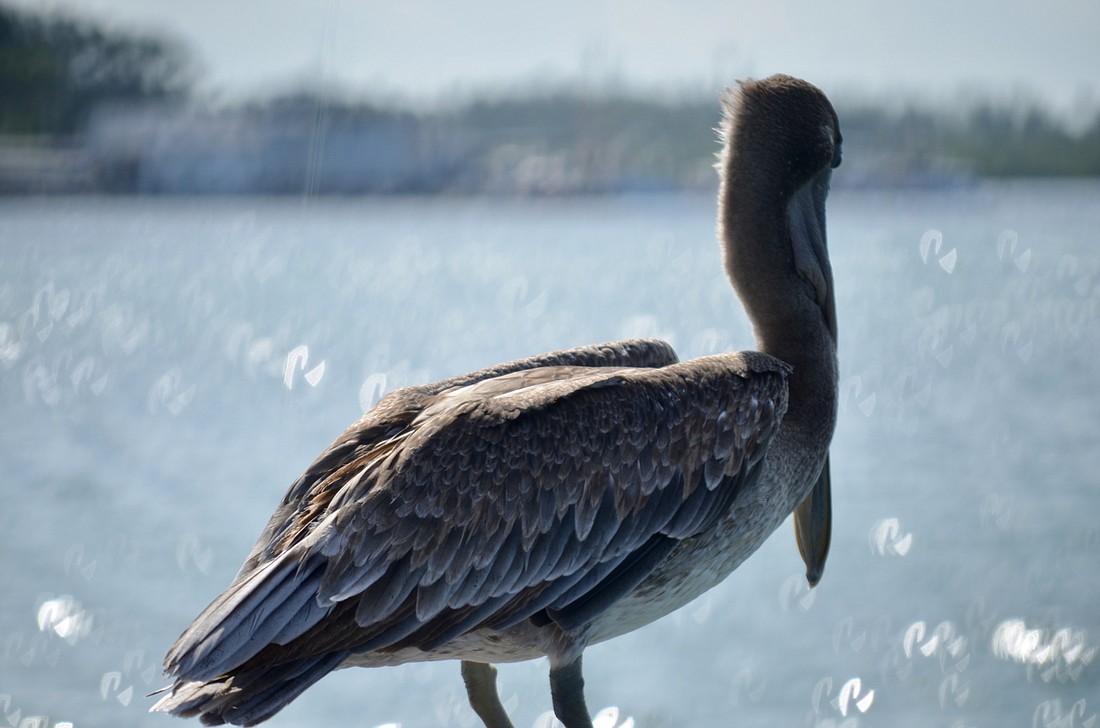- April 30, 2024
-
-
Loading

Loading

The numbers speak for themselves when it comes to the value of Sarasota Bay to the region and the value of keeping it clean and healthy.
With an eye toward protecting one of the region's most valuable resources, the Sarasota Bay Estuary Program is embarking on a yearslong project to help coordinate local, state and federal efforts to measure pollution and its effects on the bay, define goals and advocate for improvement in the quality of the water.
It's a role the state or federal government could have undertaken, but the Estuary Program recently received permission from the Florida Department of Environmental Protection to undertake it instead.
“We’ve got decades of smart people with lots of experience here,” organization president Dave Tomasko said of the decision. “Let’s let them guide the ship.”
The overall health of the bay, including water quality and loss of seagrass meadows, have made restoration efforts necessary in hopes of preventing conditions from worsening. Close to $1 billion in projects paid for by local, state and federal sources is expected to be spent by the time the Sarasota Bay restoration process is complete, though the exact timeline of the work is harder to pin down, authorities say.
In October, the Estuary Program submitted to FEDP for approval, a “reasonable assurance plan” that aims to set a baseline on what pollutants exist in the bay waters now, their effects on water quality and what might be needed to return water quality to a level seen around 2006-2012, when seagrasses last flourished.
The plan will take into account a wide range of projects aimed at water-quality improvements from Manatee County, Sarasota County, Bradenton, Sarasota and Longboat Key. The total expenditure is expected to reach about $900 million.
Among the projects that would be considered to be improvements to Sarasota Bay waters and added to the total:
The Sarasota Bay is considered an “estuary of national significance,” a U.S. Congressional designation and a “surface water improvement and management priority water body” per the state of Florida. Both designations require the estuary program to maintain records of water quality and health of the system, including plans for restoration if one or both need improvement.
The approved approach presented to FDEP is as follows:
The reference period of 2006 to 2012 was selected based on items included in the bay’s report card, which include water chemistry, seagrass and macroalgae.
The timeline for the goals to be reached is unknown and dependent on a variety of factors. The water quality could recover quickly due to the bay being categorized as a well-flushed system since water is exchanged by 80% in as little as 10 days.
However, seagrass meadows are one of the goals that will likely take a longer time to be reached. About 2,000 acres of seagrass have been lost largely in part to the 2018 red tide, so getting the water quality back to improved levels is crucial in the meadow-restoration process.
Seagrass is of particular importance to the bay and its restoration as it serves importance recreationally and commercially. Some local species of fish, crabs and shrimp spend up to 70% of their life cycle in a seagrass meadow. The meadows also help stabilize sediment, aid in water quality and act as a food source for manatees and sea turtles.
“The RAP process allows us to get to ‘cleaner water, quicker’ because we’ve got so much data collected and compiled and analyzed and interpreted, and our consultants have developed an excellent pollutant loading model for our bay,” he wrote.
The program is what Tomasko said is moving from good intentions to actual steps toward restoration.
“This will be helpful for the vast majority of days during the majority of years,” he wrote. “Very importantly, it will be helpful when we have red tide brought onto our shores, and if we are so unfortunate as to have a more direct impact from a tropical storm or hurricane.”
Data shows that despite population growth and impacts from Piney Point, 2021 had the best water quality across the bay in the last five to 15 years.
In 2021, Sarasota County had an estimated population of 447,057 people, which equals a 17.7% growth from the estimated population in 2010 of 379,942. In Manatee County, the population in 2010 was about 323,442 and grew about 27.6% to 412,703 people in 2021.
The improvement in water quality amidst the change in population illustrates that changes are already being made in terms of the care and protection of Sarasota Bay, which makes Tomasko and the program hopeful that in time the area can begin to serve others as a role model for caring for and protecting coastal systems.
Funding from the Bipartisan Infrastructure Law signed into law by President Joe Biden on Nov. 15, 2021 will provide the program and projects outside of the RAP $900,000 per year over five years, totaling about $4.5 million.
Projects that will benefit the bay, but are not under the RAP include planting of clams in the bay in hopes of enhancing seagrass growth.